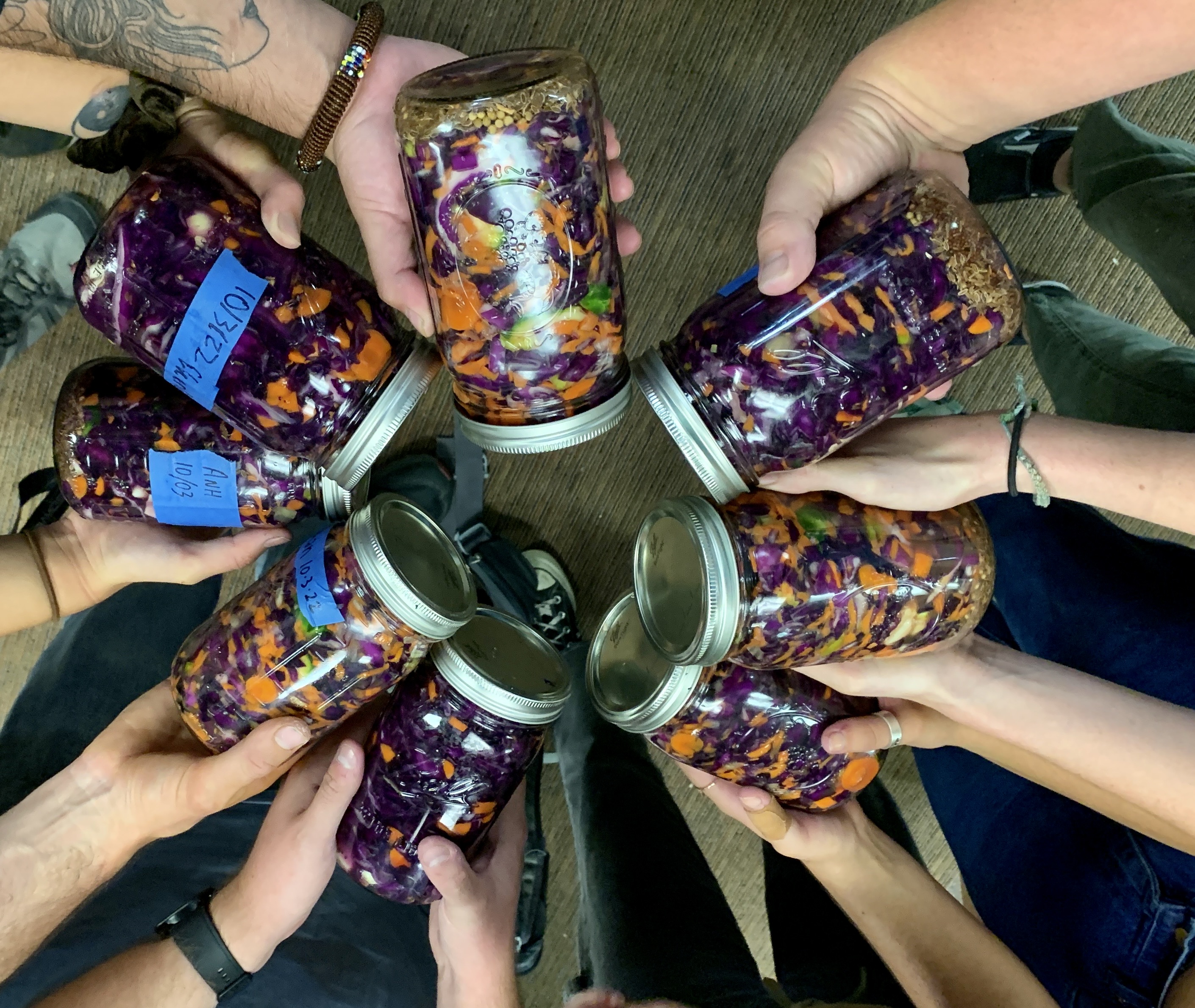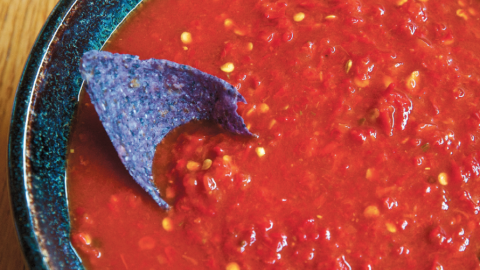Massaging Cabbage
I recently taught a basic class at Prescott College on the introductory process to live fermentation.
I call it “massaging cabbage” because cabbage is the mainstay—red, green or napa. You could call it “seasonal kraut.” For each quart jar (use glass only) you’ll need 1 tablespoon of salt and 2½ pounds of vegetables, predominately cabbage, but also your pick of carrots, broccoli, cauliflower, daikon radish, sweet red peppers or beets for variety (beets will turn everything red, but that’s OK). I always include several large cloves of garlic, whole and peeled, and sometimes I add a 2-inch piece of fresh ginger, thinly sliced. For extra flavor—and this is optional—I recommend 1 teaspoon of caraway seed (which is traditional), dried chili peppers, or any other spice mix you like.
Start by grating, finely slicing or chopping your ingredients (sometimes I leave the garlic whole). Put everything in a bowl and mix in the salt and spices. Now massage the cabbage using your hands. Get into it! Set the bowl aside and take a break. Then massage some more.
At this point osmosis occurs—a process by which molecules tend to pass through a semi-permeable membrane from a less-concentrated solution into a more-concentrated solution, thus equalizing the concentrations on each side of the membrane—the salt solution passes through the vegetable cell walls and the liquids within the cells spill out. You’ll be able to squeeze your vegetables and juice will drip out.
Now you’re ready to pack your jar with all the vegetable matter and liquid. Press the vegetables down firmly until they are submerged. You are set to ferment! Your vegetables will become covered in Lactobacilli bacteria, which thrive in saline and anaerobic (without oxygen) conditions—just what you have created in your jar. The Lactobacilli form lactic acid, which adds great flavor, preserves your vegetables and discourages harmful bacteria. This is one of the oldest and safest food technologies known. Lactobacilli also provide beneficial probiotics for intestinal health, making your seasonal kraut not only delicious but also gut healthy.
Cover your jar loosely to keep out insects and dirt. The fermentation process creates carbon dioxide gas (what makes soda fizzy). Leave the lid loose so gas can escape without building up pressure. And put the jar in a place where you can keep a close eye. Within 24 hours there will be activity. Solids tend to float up, so pack them down again under the liquid and hold them in place under a single large cabbage leaf or small weight. Keep in touch. Check your ferment and start tasting daily. Notice the changes—in taste and texture: Harsh flavors, including hot chilies, mellow, whereas vegetables soften and take on a deliciousness.
You may see a light film of white mold; this is safe, just stir it in. Any other color of mold is dangerous. Dump the jar and start over, being more attentive next time.
After four days to two weeks, when the taste is most delicious to you, crank down the lid and refrigerate. Your ferment is done and ready to eat. Refrigeration slows down but does not stop the process. I’ve kept ferments up to a year—but usually devour them much sooner.
Success! You are now a fermenter! Start new ferments. Share the knowledge. Learn more.






